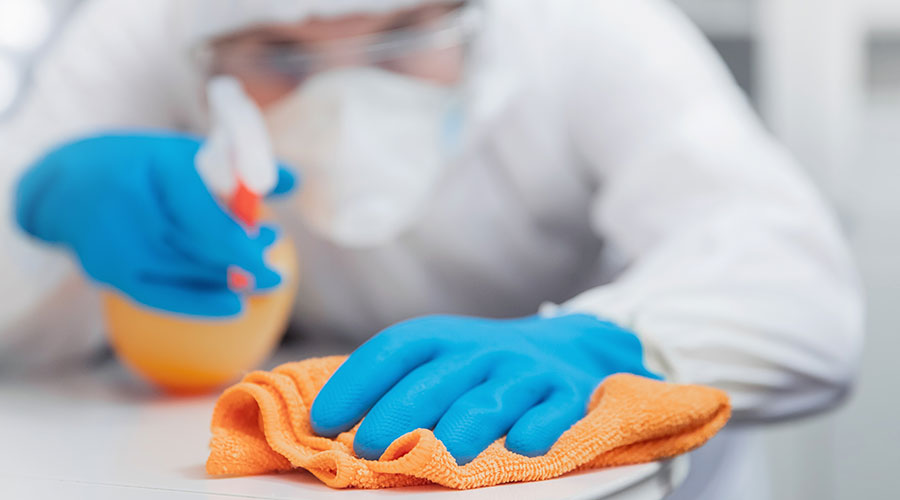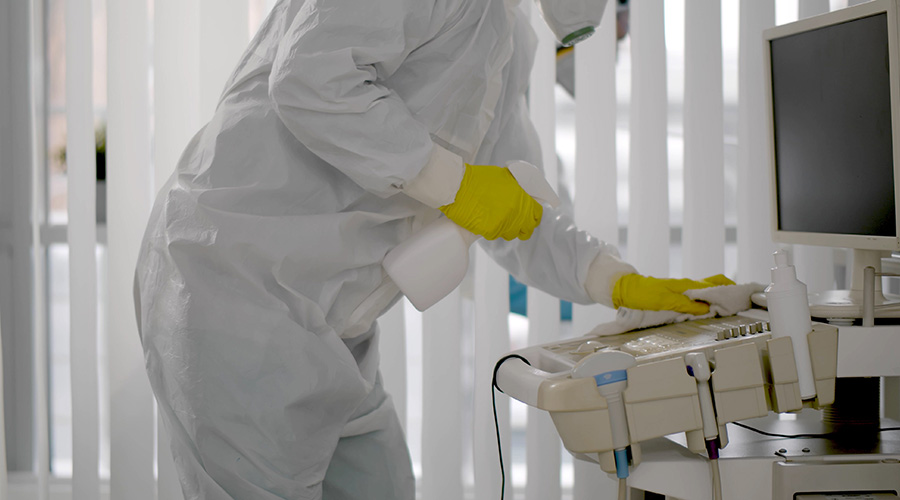The term biofilm with scientific respect to microbiological applications was coined by J. William Costerton, a professor at the University of Montana. Costerton observed that bacteria and other cellular microorganisms often create their own living spaces to support their long-term survival, propagation and spread. With that, Costerton opened a new arm of the science of microbiology, revealing the fact that we have much to learn about biofilm.
A superbug that lands on a surface can form a biofilm like its friendly cousins. But the surface does not normally fight back, so survival is a bit easier. If we clean the surface, most transient bugs will be removed but not the biofilm nor the resident bugs in the biofilm.
Research has found dry surface biofilm (DSB) containing superbugs on an estimated 90 percent of high-touch surfaces and equipment in intensive care units. The presence of DSB on hard, nonporous surfaces has proven to be a global problem with few solutions. The biofilms created by these microbes demonstrate a remarkable resistance to traditional cleaning and disinfection methods. Even worse, superbugs hidden in biofilms demonstrate an even greater capacity to resist antimicrobial treatments, including antibiotics and disinfectants.
Related: Biofilms: The New Frontier for Reducing MDRO
From new methods, it has been discovered that bacteria in a DSB have 1,000 times more resistance to chlorine disinfectants. And if you touch the biofilm, the bugs jump onto your fingers or gloves and typically stay there for up to 19 subsequent touches.
Staff, patients and visitors acquire pathogens on their hands and either inoculate a potential infection site themselves or transfer microbes to other sites, including vulnerable patients. This clearly raises a question over the efficacy of routine cleaning practices for environmental surfaces.
Spores have always held the throne in the U.S. Environmental Protection Agency’s pathogen hierarchy. But what if we’re missing the real challenge? What if biofilms — the intricate, self-protective communities of microbes —are the true top-tier threat in today’s environments? Unlike spores, biofilms create their own fortress, making them exceptionally tough to break down and tenacious in real-world settings.
From hospital surfaces to water systems, biofilms are everywhere, complicating infection control and resisting traditional cleaning and disinfection. Reassigning biofilms to the top of the hierarchy is not just a technical shift. It is a call for innovation and a complete change in the way we approach microbial control.
Biofilms demand more than a one-size-fits-all solution. They require precision, persistence and, most importantly, awareness. Perhaps it is time we update the pathogen hierarchy to acknowledge that biofilms are not only complex but must be recognized as the top-of-the-pyramid predators they are.
J. Darrel Hicks, BA, MESRE, CHESP, Certificate of Mastery in Infection Prevention, is the past president of the Healthcare Surfaces Institute. Hicks is nationally recognized as a subject matter expert in infection prevention and control as it relates to cleaning. He is the owner and principal of Safe, Clean and Disinfected. His enterprise specializes in B2B consulting, webinar presentations, seminars and facility consulting services related to cleaning and disinfection. He can be reached at darrel@darrelhicks.com, or learn more at www.darrelhicks.com.

 What Every EVS Leader Needs To Know
What Every EVS Leader Needs To Know Blackbird Health Opens New Clinic in New Jersey
Blackbird Health Opens New Clinic in New Jersey St. John's Riverside Hospital Falls Victim to Data Breach
St. John's Riverside Hospital Falls Victim to Data Breach Grounding Healthcare Spaces in Hospitality Principles
Grounding Healthcare Spaces in Hospitality Principles UC Davis Health Selects Rudolph and Sletten for Central Utility Plant Expansion
UC Davis Health Selects Rudolph and Sletten for Central Utility Plant Expansion